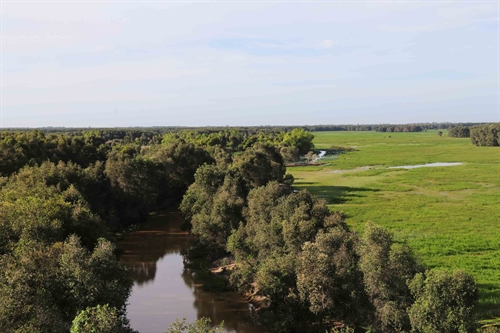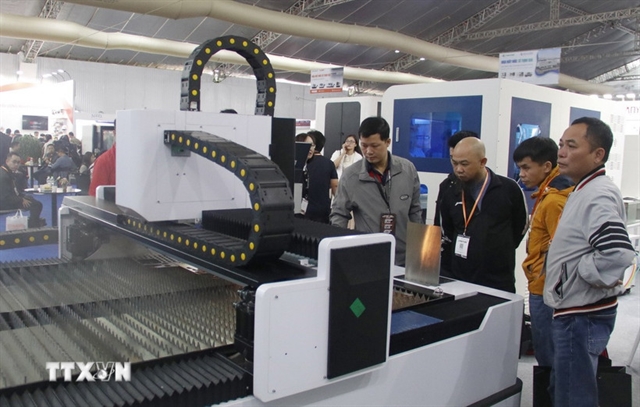 Op-Ed
Op-Ed

Việt Nam’s Mekong Delta is facing severe drought and critical inland salination at the same time. El Nino and the shortage of water to the delta due to dams built by countries in the upper Mekong mainstream are the main causes; however, Vietnamese water reserve policies are also part of the story.
 |
| View of the Plain of Reeds, an important natural reservoir, in Đồng Tháp Province. — VNS Photo Phước Bửu |
Phước Bửu
Việt Nam’s Mekong Delta is facing severe drought and critical inland salination at the same time. El Nino and the shortage of water to the delta due to dams built by countries in the upper Mekong mainstream are the main causes; however, Vietnamese water reserve policies are also part of the story.
The Mekong River enters Việt Nam’s territory in two big tributes of the Tiền and Hậu rivers before it ends in the sea through nine estuaries. The delta has thousands of inland canals, and for centuries, it seemed hard to believe that the delta would face a water shortage.
But this year, drought has occurred in many delta provinces and low levels of fresh water in the canals have facilitated the intrusion of salty water, which is said to be the strongest in 100 years now.
As many as 180,000 hectares of farm land has been affected, destroying crops and causing critical shortages of water for delta residents.
Local governments in the affected provinces of Long An, Tiền Giang, Bến Tre, Sóc Trăng, Trà Vinh, Hậu Giang, Bạc Liêu and Kiên Giang have attempted to source water from neighbouring, less affected provinces.
The central government has delivered the provinces a relief package of VNĐ650 billion (US$29 million) for dealing with salination and drought. At the same time, the Vietnamese government asked countries that own power dams on the upper Mekong mainstream to release water from their reservoirs to water the dried-up rice paddies.
Scientists have argued that this will not solve the long-term problem. They urged that the practical situation in Việt Nam be looked into.
First, the country needs to find a fair mechanism of water sharing on the Mekong mainstream, with strong commitments from dam operators on when and how much water will be released.
The country must also find the exact cause to water shortage in the tributes’ basin, not on the river. The delta has two wetland zones, 489,000ha Long Xuyên Quadrangle and 697,000ha Plain of Reeds, which serve as natural reservoirs, taking water from Mekong floods and holding it to supply canals in dry season, as underground water sources.
However, the closed system of earthen embankment circling wide areas of rice paddies and orchards has prevented water from annual Mekong floods entering the quadrangle and the Plain of Reeds for almost a decade now. Both natural reservoirs face a critical shortage of water.
Scientists have also called for reconsidering the country’s development mindset; they want a policy switch from change and prevention to adaptation. The country should also stop chasing the title of world’s top rice producer.
High concentration on rice production has resulted in the embankment system, which allows farmers a third crop of rice in a year, during the Mekong floods. Experts said annual floodwater helps clean the paddies by washing insects, rats and chemical residue away. Without the floods soil has become polluted and pests have spread, which means more chemical use and more pollution year after year.
Scientists also suggested policy of switching canals with bracket water into fresh water for the aquaculture sector. Scientists said any move against nature would result in negative outcomes from the changed natural conditions. Countries should develop or select aquaculture species that can live in bracket water for the delta breeding industry.
Notable Prof Võ Tòng Xuân of An Giang University once said the real problem to the delta is the over concentration on rice production. Meanwhile, Associate Prof Lê Anh Tuấn of Cần Thơ University called for the return of natural delta features, which means flooding should happen naturally in the region and canals with bracket water should remain its status quo.
Water from Chinese and Lao power dams could help temporarily, but only Việt Nam can save itself, by changing the policies affecting water reserves and the canals in the Mekong Delta, with a long-term vision. — VNS




